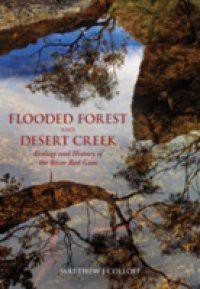The river red gum has the most widespread natural distribution of Eucalyptus in Australia, forming extensive forests and woodlands in south-eastern Australia and providing the structural and functional elements of important floodplain and wetland ecosystems. Along ephemeral creeks in the arid Centre it exists as narrow corridors, providing vital refugia for biodiversity. The tree has played a central role in the tension between economy, society and environment and has been the subject of enquiries over its conservation, use and management. Despite this, we know remarkably little about the ecology and life history of the river red gum: its longevity; how deep its roots go; what proportion of its seedlings survive to adulthood; and the diversity of organisms associated with it. More recently we have begun to move from a culture of exploitation of river red gum forests and woodlands to one of conservation and sustainable use. In Flooded Forest and Desert Creek, the author traces this shift through the rise of a collective environmental consciousness, in part articulated through the depiction of river red gums and inland floodplains in art, literature and the media.

